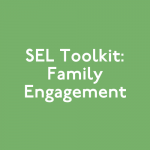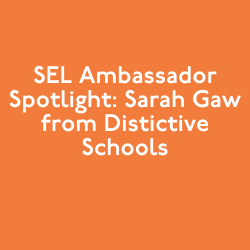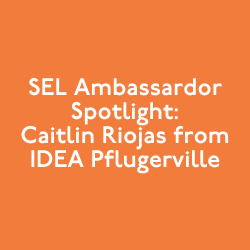Over the past 2 months, schools have shifted teaching and learning in a way they have never done before. From solving problems like access to devices and the internet, to innovating new ways to deliver content, track attendance, and engage parents, it feels like there have been more changes in the past 2 months than in the past 10 years!
Hear from some of our partner schools to learn more about how they have been facilitating social emotional learning remotely. We hope you gather some ideas to help support your school communities, too!
Emilee Strubeck is a 4th grade teacher at Mariana Bracetti Academy in Pennsylvania. When schools across the country started to shut down, she reached out to her educator friends in other states to offer SEL support. We spoke with Emilee and to learn more about how she’s been connecting with other classrooms to practice SEL together.
MTW: What does virtual learning look like in your school community right now?
Ms. Strubeck: I am using all platforms I have access to [in order] to try and engage and communicate with parents, families, and students: Class Dojo, Google Voice, Instagram, YouTube, FaceTime, Google Classroom, Zoom, Google Hangouts. Different families prefer different means of communication, so I am trying to be as flexible as I can to be available for them when they need it. I am also posting Office Hours Weekly where I map out my schedule for the week to let families and students know certain times a day when I will be readily available to respond to them. I schedule a 1-hr Zoom Q&A 1-2 times a week that is optional for students and parents to attend where I answer any questions they may have about the week’s assignments or just hang out with the kids and chat for an hour. It’s been a great way to provide some socialization for both myself and the kids!
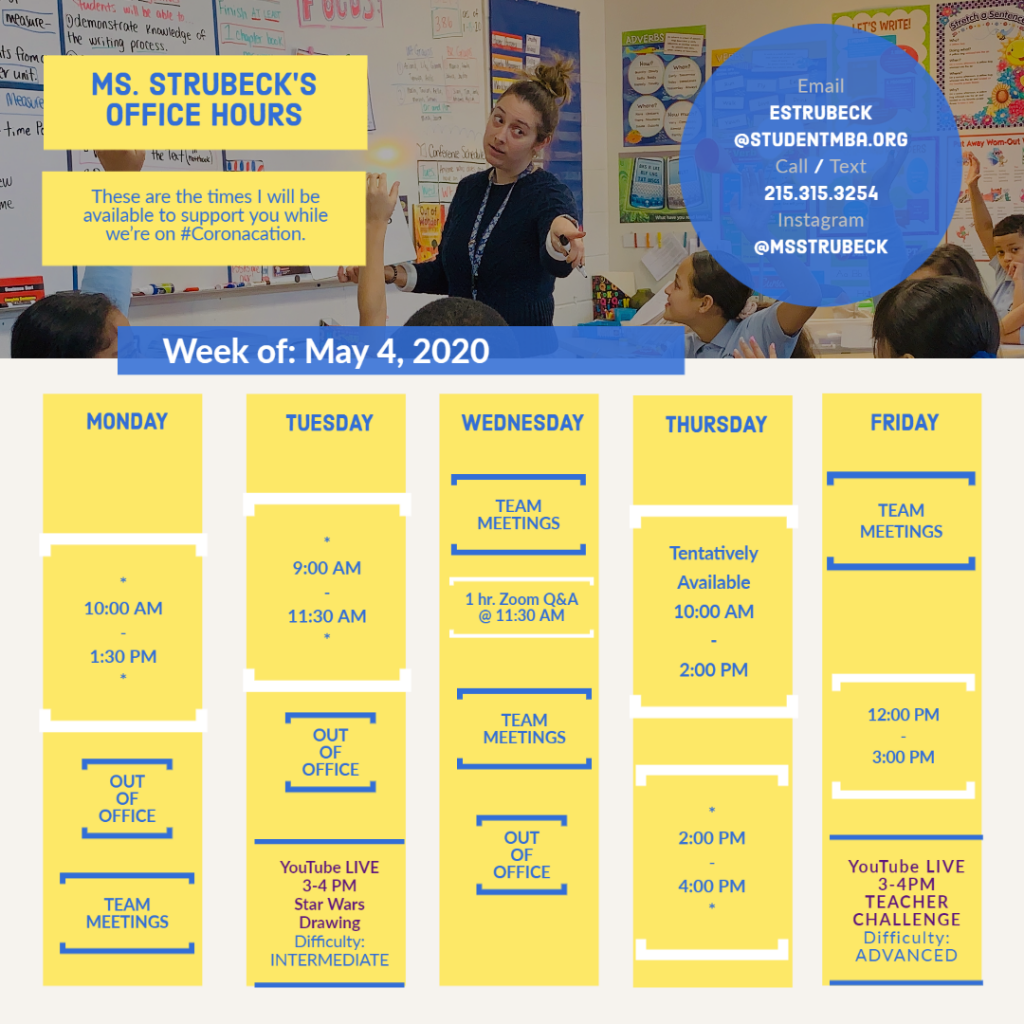
They really miss seeing each other every day. I even had a student giving out virtual hugs to his classmates yesterday! It’s adorable, and I’m so thankful that our school is encouraging us to make these virtual connections with our families, because I have heard from other teachers that their schools are not allowing any type of video communication like this. I am lucky to work at a school that values building and maintaining relationships with our students and families and has a “whatever it takes” mentality.
“Emilee led a guided drawing where we combined my Denver class and her Philly class and it was amazing. We got such great feedback from Admin on her inclusive practices, her SEL models and her engagement techniques.” -Alyssa Ciesla, 4th Grade Team Lead, Ruby Hill Elementary in Colorado
MTW: How have you been supporting educators in other states with SEL?
Ms. Strubeck: I was honored to be asked to teach a Directed Drawing SEL lesson to the kiddos at the Epilepsy Foundation of Colorado. During my directed drawing lessons, I always start with mindful breathing exercises and remind the students and their families what it means to be mindful and why it’s so important, especially during these uncertain times we’re living in right now.
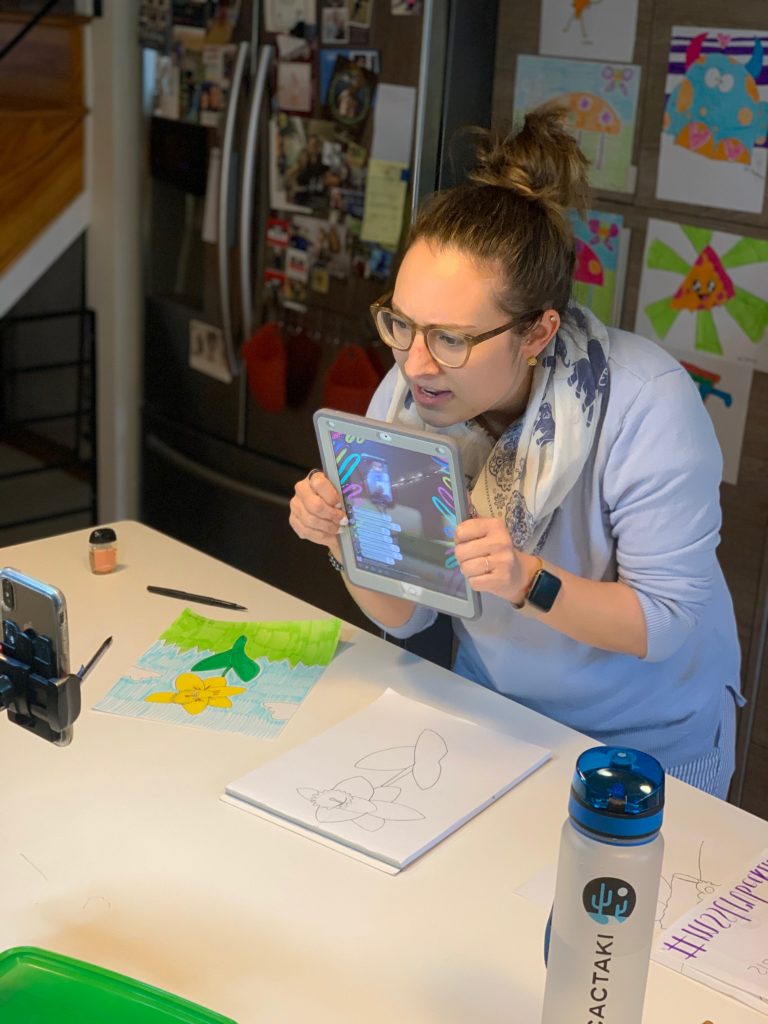
Once we draw and then are ready to color, I begin encouraging engagement and discussion amongst the students. We talk about why it’s important to be able to name their feelings/emotions and also be equipped with strategies and tools for managing those emotions, which is where the MTW Emotional Building Blocks and 10 Emogers posters come in handy.
“We had Emilee teach an amazing class for our children impacted by epilepsy. The class was inclusive and Emilee created a safe space for our kids to connect. A couple of the girls even discussed their emotions with hospital visits. The drawing was great for all ages and abilities.” -Wendy Kogel, Program Manager, Epilepsy Foundation of Colorado
During this particular lesson, I was especially touched when, after a few students began sharing how they’d been feeling, a girl raised her hand to share. She told the group about a time when she went to the hospital because she was having brain surgery, and she felt nervous and anxious. It was an incredibly vulnerable moment for her and we were able to talk through those feelings, about ways she can and did manage them safely and what she might do the next time she feels that way. It was a heartwarming moment that I will never forget. And our discussion even prompted another student to raise his hand and share a time when he had to have blood work done and was feeling similarly. So it not only gave them a chance to process and name their feelings, but also gave them an opportunity to build camaraderie and feel a sense of belonging amongst their peers who battle similar struggles as children who are impacted by Epilepsy. And I’m sure it was great for the parents to witness those conversations as well.
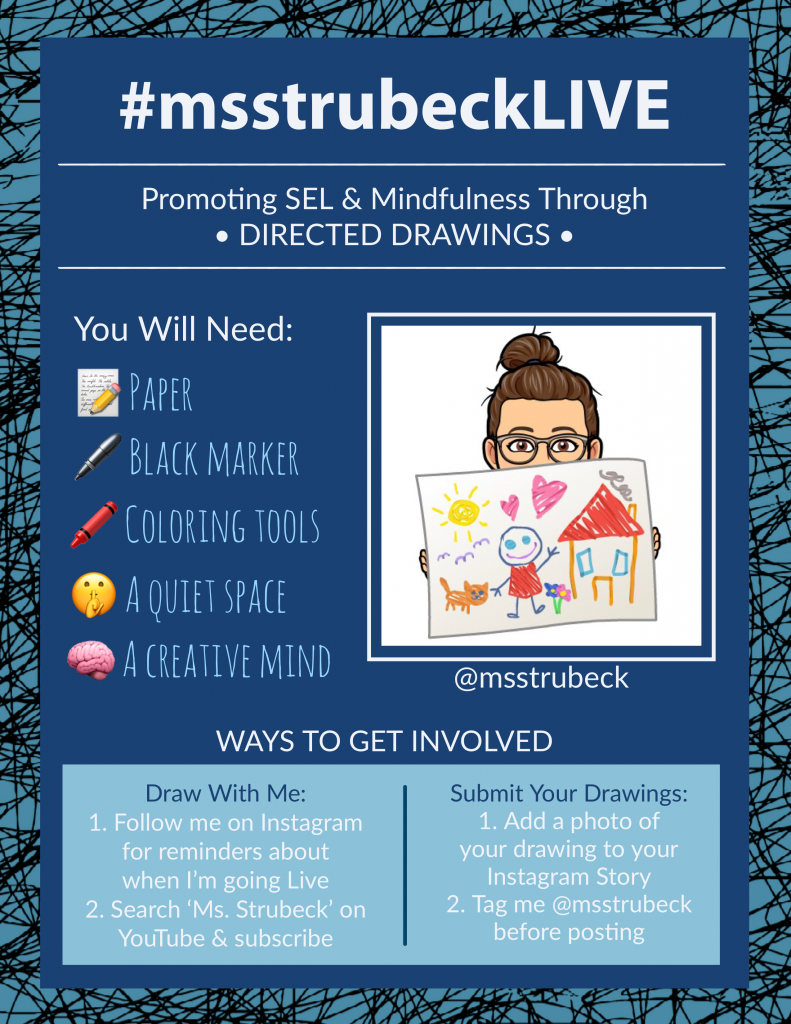
MTW: What advice do you have for other schools that want to help families practice SEL at home right now?
Ms. Strubeck: If schools want to help families and students with SEL at home, they first have to be practicing social/emotional strategies themselves and believe in the power of SEL in general. Without complete teacher/school investment in the significance of SEL, it is inherently difficult to promote SEL to families. That is why it has come so easily to me; I am a firm believer of the importance of SEL and practicing mindfulness. So it is second nature to me to promote these things to my students and families. And therefore, my authentic approach to guiding them through discussions and exercises is more well received and less like I am going through the motions of an exercise someone “told me to do.”
If teachers want to begin addressing SEL topics and practicing mindfulness, I would recommend building in a few minutes of some type of mindful breathing at the start or end (or both) of the calls/videos/instruction they are providing. That is an easy place to start. Once you’ve established that routine and procedure, you can then build on that by facilitating discussions around students naming their feelings, validating their feelings, reminding them that it’s ok to feel anxious, depressed, torn, as long as you know safe and responsible ways to manage those feelings.
I usually resort to the 4-2-6 breaths. Breathe in for 4 seconds; hold your breath for 2 seconds; exhale for 6 seconds. There are other variations of this as well (I’ve seen others do 5-6-7, and so on, but 4-2-6 is the sweet spot for me). This is a super simple way to start a mindful breathing habit. Then, you can encourage the kids to practice the 4-2-6 breaths whenever they need a moment to calm down or are about to start a project they might think is difficult, etc. This type of breathing lowers your heart rate and forces your mind and body to be in the present moment, which is what being mindful is all about, which is all we ever have: the present.
If students (or teachers, even) aren’t comfortable participating in breathing exercises or have difficulty sharing their emotions, they will be reluctant to engage. But the more frequently you (the teacher) model the breathing and emotion discussions, the more normalized it will seem to your students, and that is ultimately how you achieve the highest level of engagement. But it must start with teachers becoming comfortable with the practices and modeling their investment and beliefs for their students. And chances are, if you’re doing all of this virtually, parents and family members will be listening, and what you will be modeling and facilitating are great tools for the parents to learn and practice at home too. It may even open up discussions amongst parents/children about their feelings that they may never have had before an introduction to SEL and becoming more comfortable and confident sharing their emotions.
We also had a chance to hear from some of Ms. Strubeck’s 4th grade students to learn about how they have been doing during these days of learning from home.
MTW: What has it been like learning at home? What is your favorite part of staying home?
Student: My favorite part of spending time at home is [spending] more time with family, exercising more and eating healthy.
Student: My [favorite] part about being at home is when I play video games and hang with my family.
Student: I like to chill, hang out with my sister, take a nap. If I’m having a really stressful day I like to stop and calm myself down. Basically, when I’m angry I use tighten and release, take 5 breaths and get a drink of water. These are all the things that help me. I really appreciate them. I feel like it’s not just for anger you can use them. You can use them when you’re happy, tired, sad, depressed, anxious. You can use them whenever you want. When you need it the most and you’re using it, it feels good. It feels good to have something in your life that helps you.
Student: My favorite part of being home is I have been getting more rest, making memories with my family, and although in a distance still connecting with my school friends and teacher.
MTW: How have Ms. Strubeck and MTW helped you during this time?
Student: They have been so great. When I get emotional, I either call my mom, Ms Strubeck, or MTW. It’s kind of awesome to have something in your life that’s helping you, and I’m telling the truth from the bottom of my heart. Ms. Strubeck has helped me so much in life. I learned how to control my emotions, you would say. MTW has helped me get over the fact that I almost lost my dad to something really bad. I’m okay now. I just wanted to say thank you to Ms. Strubeck and MTW. They’ve been helping me a lot through this time. I can get sad and call Ms. Strubeck. I can get angry and I’ll tighten and release. These are things other students need. If your teacher doesn’t provide these for you, I really hope they do in the future. Students really could use this message. I trust and believe they work.
Student: Ms. Strubeck has helped me by staying calm and excited because you never know what she is going to do on the Directed Drawings we do. Move This World has helped me when I was working out with my parents. I used the Emogers breath five times and drink a glass of water.
Student: Ms. Strubeck and Move This World helped me express my feelings.
Student: Ms. Strubeck and Move This World have helped me [be] calm in this situation and it’s been really helping me get over my fear of my elderly [family members getting sick].

MTW: Have you done any activities that have helped you with your feelings while you’ve been home? What did you do and how did it make you feel?
Student: An activity I’ve been doing to get my mind off of this problem is drawing, like anime. Now I feel really happy drawing.
Student: I usually walk around, get a drink of water or iced tea. I’ll run, use the Emotional Building Blocks, and do some mindfulness. I don’t like sharing that because I feel like mindfulness is weird but deep down inside I really like it. I just appreciate everything. I even try to sleep my anger off. Whenever I get angry, I try to fall asleep so I can forget about it and have good memories. I’ll walk around with my mom, or talk to her. I watch my mom cook while I tighten and release, or put yourself in someone else’s shoes, just for a minute or two. This makes me feel so happy and so relaxed. I really want to go to school and I miss my friends so much. I miss [my teachers], everyone. I even miss you, too, MTW. I miss it.
Student: At home when I get frustrated with homework I tighten and release. When I tightened and released I felt calm enough to continue my homework.
Student: I have been playing games with my family and that makes me feel happy that we are spending time together.
MTW: What advice do you have for other students who might be struggling to learn at home right now?
Student: Some advice that I have for other students that are struggling is keep calm and spend time with family members. It will really put a smile on your face.
Student: Just take a breath, drink a cup of water. Remember how in school you did certain things, and do those things at home. Like, math and ELA, ask for help, use a calculator (sometimes we use those in class). Ask a parent. If you have some difficulties doing some of this stuff, like joining mandatory Zoom meetings, it is okay, as long as you contact your teacher and tell them why. I really think they will appreciate that you reached out to them and that you are trying to learn but it’s kind of difficult because we’re not in school, we’re in quarantine. If you do know Move This World you can do the Emotional Building Blocks with family. There are people in your house that can help you. Try, and if you need help just contact your friend or ask your mom. You should ask anyone and everyone when you need help. Because just know, we are all here. We might not be at school with you, but we’re here. Just believe it.
Student: If I had to get advice to other students who are struggling I would tell them to take deep breaths or drink a glass of water.
Student: [Some] advice I have for other students is do what you love and think on the bright side, that’s what matters most.
This time of school closures has brought unprecedented challenges for all of us, and schools have had to shift to remote learning very quickly. Our partner schools have navigated those challenges with SEL at the forefront of their work, and we hope their stories give you ideas about supporting SEL in your school community, too!
Are you ready to implement social emotional learning in your district or school? Share your information and we’ll be in touch!
[pardot-form id=”263″ title=”MTW General Interest Form”]

